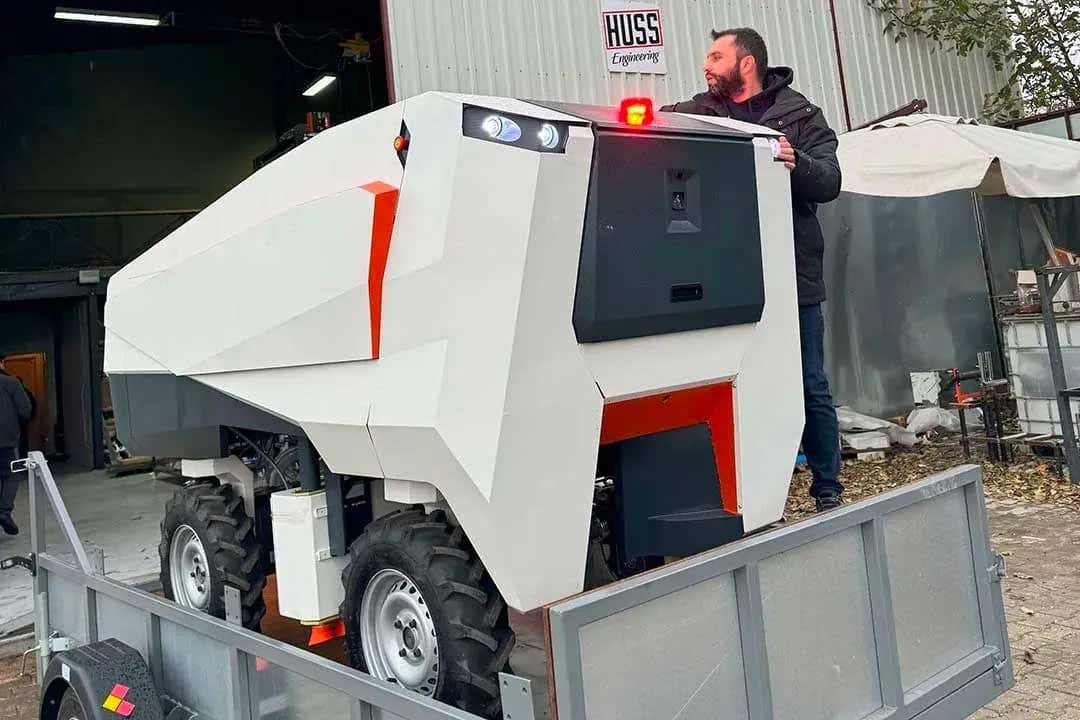Cotton picking robot revolutionizes farming — improving yields by 20%
Start-up is in the process of crafting an autonomous vehicle designed to gather leftover cotton from fields worldwide.

Afara claims its cotton detection rate is fully 99.8 percent, with picking efficiency currently at 71% (of the “leftover” 20%), with a target picking efficiency rate at more than 90%. (CREDIT: Afara Agricultural Technologies)
Afara Agricultural Technologies, a startup hailing from Turkey, is in the process of crafting an autonomous vehicle designed to gather leftover cotton from fields worldwide.
Originating as a solution devised for use on the founder's family farm, the project evolved into Afara Agricultural Technologies in 2023, with the goal of taking their prototype to market.
According to Afara, co-founded by the son of a Turkish cotton farmer, between 5 to 20 percent of cotton remains uncollected in fields even after the use of self-propelled harvesters.
The company aims to commercially introduce their cotton picker robot by the end of this year. (CREDIT: Afara Agricultural Technologies)
This is often due to limitations in machinery, operator constraints, as well as variations in plant density and yield quantities. Currently, this leftover cotton is typically gathered by hand, a labor-intensive and demanding task.
The Afara cotton pick robot, fully electric in nature, is equipped with 4 RGB cameras, 2 LiDAR sensors, and ultrasonic sensors.
These cameras detect the leftover cotton, while LiDAR sensors identify obstacles and humans in the robot's path. With a claimed cotton detection rate of 99.8 percent, the robot's arms, equipped with suction cups, efficiently gather the leftover cotton and deposit it into an onboard container.
Related Stories
Presently, the picking efficiency stands at 71 percent, with a target of reaching 90 percent efficiency.
The onboard container has a capacity of 150 to 200 kilograms of partially compressed cotton. However, the machine does not currently wrap the cotton within the container.
Once full or nearing capacity, the robot navigates to a predetermined unloading point where a human operator empties the container into a trailer. If required, the cotton can then be baled and wrapped subsequently.
The Afara Robotic Cotton Picker is an autonomous solution for cotton harvesting, featuring advanced sensors and vacuum systems to accurately identify and collect cotton bolls. (CREDIT: Afara Agricultural Technologies)
In its initial iteration, the robot can collect leftover cotton from two rows, with broader models potentially available in the future. While operating, the robot moves at speeds of up to 3.2 km/h.
At the end of a row, a human operator utilizes a remote control to turn the robot and position it for the next row. Powered by a battery package, the machine offers up to 6 hours of autonomy. Recharging typically takes 6 to 7 hours at regular speeds, but future fast charging at 84 kW is anticipated to reduce this time to 1.5 hours.
The company's plan is to introduce their cotton picker robot commercially by the year's end. The initial two-row model is expected to be priced between €120,000 to €130,000.
Additionally, Afara is developing modules suitable for gathering leftover peanuts using the same collection principle, alongside software updates. While the Afara robotic cotton picker was not showcased at World FIRA, the company provided photos and a video to offer insights into their innovation.
For more environmental news stories check out our Green Impact section at The Brighter Side of News.
Note: Materials provided above by NC State University. Content may be edited for style and length.
Like these kind of feel good stories? Get the Brighter Side of News' newsletter.
Joseph Shavit
Head Science News Writer | Communicating Innovation & Discovery
Based in Los Angeles, Joseph Shavit is an accomplished science journalist, head science news writer and co-founder at The Brighter Side of News, where he translates cutting-edge discoveries into compelling stories for a broad audience. With a strong background spanning science, business, product management, media leadership, and entrepreneurship, Joseph brings a unique perspective to science communication. His expertise allows him to uncover the intersection of technological advancements and market potential, shedding light on how groundbreaking research evolves into transformative products and industries.



